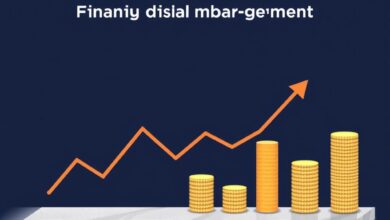How to use robo-advisors to automate your investing

Consider integrating finance apps into your approach for managing a portfolio. These platforms leverage automation to streamline investment choices and optimize asset allocation based on your unique financial goals.
To enhance efficiency, explore tools that analyze market trends and adjust allocations in real-time. Automation not only reduces the burden of manual oversight but also ensures your investments align with current economic conditions and personal risk tolerance.
Utilizing these advanced applications can lead to more consistent performance, as they consistently monitor and rebalance holdings without the emotional biases that often accompany trading decisions. By employing such innovative solutions, you position yourself to achieve better long-term outcomes while dedicating your time to other important aspects of life.
Choosing the Right Robo-Advisor
Select a platform that aligns with your financial goals and risk tolerance. Here are key factors to assess:
- Fees: Compare management fees and additional costs. Lower fees can significantly impact long-term growth.
- Investment Options: Ensure the service offers a diverse range of asset classes, including stocks, bonds, and ETFs.
- User Interface: Opt for intuitive finance apps that simplify tracking performance and making adjustments.
- Automation Features: Look for tools that provide automatic rebalancing and tax-loss harvesting to enhance returns.
- Custodianship: Confirm the service partners with reputable custodians to safeguard your assets.
- Personalization: Choose a provider that allows customization based on individual preferences and objectives.
- Customer Support: Evaluate the availability of support channels for inquiries or issues that may arise.
Conduct thorough research by reading reviews and comparing multiple options before committing. The right choice can streamline your financial journey through automation in digital investing.
Setting Up Your Investment Profile
Define clear financial objectives. Specify whether you’re aiming for long-term growth, short-term gains, or a balanced approach. This clarity will guide the tools employed in managing your portfolio.
Assess risk tolerance accurately. Utilize questionnaires provided by platforms to gauge how much volatility you can endure. Knowing your comfort level with market fluctuations is pivotal for selecting suitable assets.
Detail investment horizons. Determine whether you plan to invest for several years or just a few months. This timeframe influences asset selection and overall strategy.
Incorporate diversification preferences. Decide if you want exposure to stocks, bonds, real estate, or alternative investments. A well-rounded portfolio reduces risk and enhances potential returns.
Review liquidity needs regularly. Ensure that your profile reflects any immediate cash requirements. Balancing between liquid assets and long-term holdings is vital for maintaining financial flexibility.
Utilize automated adjustments based on performance metrics. Set parameters that allow for periodic rebalancing of the portfolio as markets change, ensuring alignment with your original goals.
Stay informed about market trends and adjust your profile accordingly. Regularly evaluate economic indicators and personal circumstances to refine your approach to digital investing.
Finally, monitor progress against initial benchmarks periodically. Establish milestones to assess whether you’re on track toward achieving financial goals, making necessary adjustments as needed.
Monitoring Performance Over Time
Regularly assess your portfolio’s performance through finance apps that provide real-time analytics. Set benchmarks based on market indices relevant to your selected assets, allowing for a clear comparison of progress.
Utilize automated alerts to notify you of significant fluctuations in your investments. This feature enables timely decision-making without the need for constant manual checking. Review these alerts alongside monthly or quarterly summaries generated by the platform.
Analyze historical data to identify trends and patterns in your portfolio’s performance. Focus on metrics such as return on investment (ROI), volatility, and asset allocation changes over time. This analysis can inform adjustments to optimize future outcomes.
Engage with community forums or expert insights provided within finance applications to gain diverse perspectives on market movements. This collective knowledge can enhance your understanding and guide strategic modifications when necessary.
Finally, establish a routine to review and recalibrate goals based on performance assessments. Aligning expectations with actual results fosters a more disciplined approach to digital investing, ensuring long-term alignment with financial objectives.
Adjusting Strategies as Needed
Regularly assess your portfolio to align it with shifting market conditions and personal financial goals. Leverage finance apps that provide real-time analytics, allowing for informed adjustments.
Consider implementing a rebalancing schedule, such as quarterly or semi-annually, to maintain desired asset allocation. This prevents overexposure to high-performing assets while ensuring underperforming sectors are not neglected.
Utilize automation tools that can trigger alerts based on predefined criteria, ensuring timely updates to your approach without constant manual oversight. For instance, set thresholds for performance dips or gains that prompt immediate review of asset allocations.
Stay informed about economic indicators and trends that may impact your investments. A proactive approach can lead to strategic shifts in response to changes in interest rates, inflation data, or geopolitical events.
Finally, regularly revisit personal risk tolerance and financial objectives. Life events such as a new job, marriage, or retirement may necessitate recalibrating your investment philosophy and portfolio composition.







